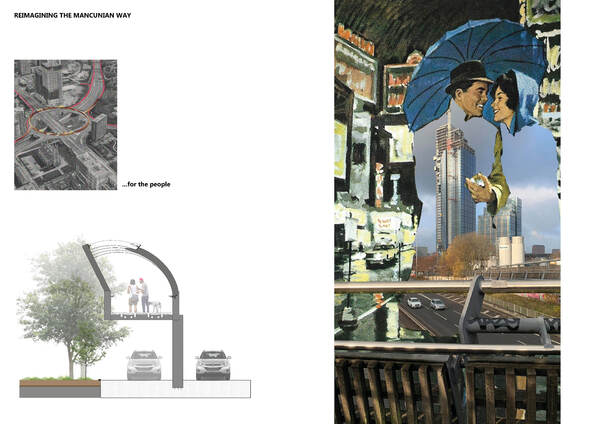From its conception in 1967, the Mancunian Way has been a vehicle-centric structure, as it was intended. However, as the world moves to a more environmentally friendly and socially conscious future, so too must such structures like the Mancunian Way. The brief I set for myself entailed designing to create a meaningful state of change that connected the citizens with their city. To reimagine the Mancunian way, as a more people-centric concept, I needed to address contemporary social issues.
Finding myself completing my third year of BArch in a global pandemic, left me in a place, like many others, where I was very conscious of my mental state and that of the world around me. It was never more obvious what the impact of restrictive movement and a disconnect with one’s surroundings can have on a person. For many, this was a reality before and evidently made worse during the nationwide lockdown. Not all members of the community equally enjoyed the same area, level of and proximity to outdoor spaces. Consequently, when the government guidelines set out travel restrictions, many were left with little choice for spaces where they could exercise and keep a healthy mind.
Re:Align is a humble proposal that offers the immediate surrounding community with greater green infrastructure and a sanctuary for mindfulness in the midst of this. Intentionally straying away from a monumental proposal, Re:Align invites its users to slow down as they participate in a walking meditative practice through the site or using the central ramp for an elevated alternative. The subterranean meditative spaces offer a unique sensory exploration of space and circulation. Although the building is not for sacred use, it is inspired by the unorthodox inversion of the traditional ascent to the key prayer space, in order to enhance the procession into the sensitive space. Here lies an invitation for the user to look inwards as they go downwards.


